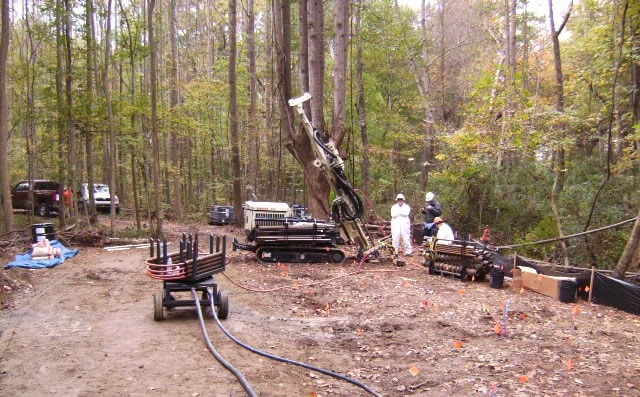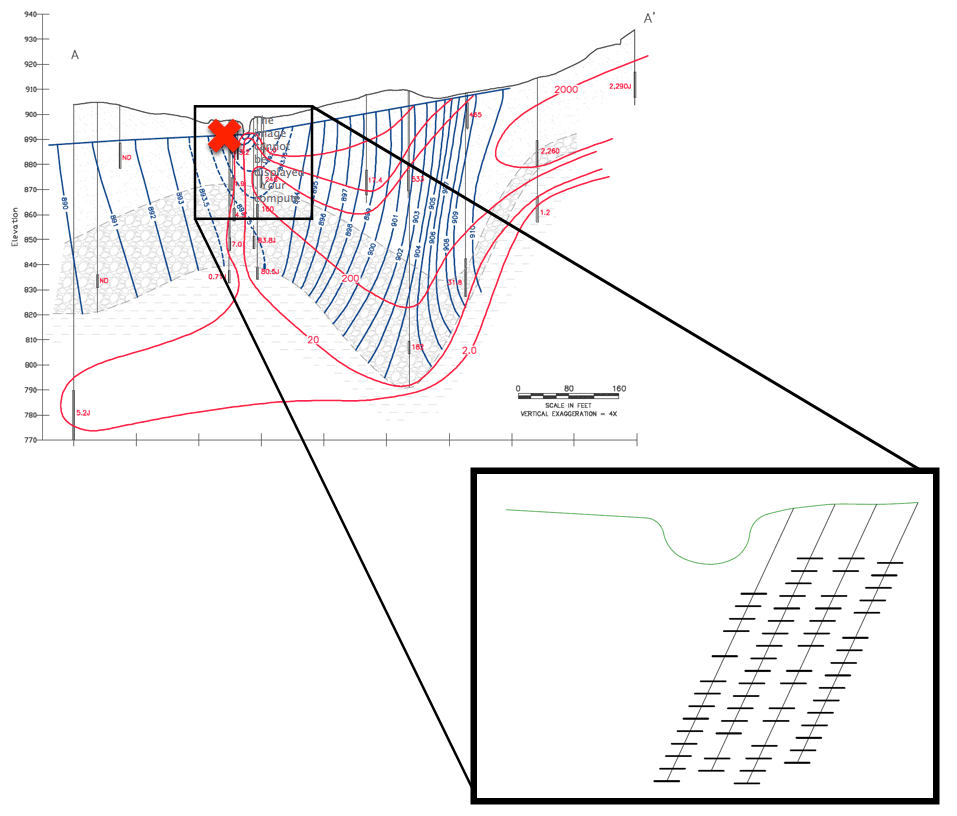
Statesville

Project Summary
AECOM has been retained to manage remedial operations and implement Remedial Investigation under direction of USEPA and NCDENR in Statesville, North Carolina. The Superfund site is a former textiles facility where PCE was used in dry-cleaning operation, and is defined as having on-site and off-site groundwater concentrations of PCE above target clean-up levels.
Project Background and Objectives
An initial Remedial Alternatives Evaluation was completed in general accordance with National Contingency Plan (NCP) guidance for feasibility studies. Based on the evaluation, a pre-design investigation was recommended followed by construction of a trenched or injected permeable reactive barrier (PRB) to treat PCE in groundwater upgradient of the surface water receptor. Pre-design investigations surrounding the surface water receptor included soil borings, discrete groundwater sampling, hydraulic profiling tool (HPT) borings, monitoring well cluster installation, geotechnical sampling, slug testing, and groundwater sampling. Investigation results indicated that PCE impacting surface water was traveling upward from weathered rock, between 40 feet and 65 feet below ground surface, within a short lateral distance from the creek. As such, an angled injection to place material adjacent to and below the creek bottom was recommended to efficiently cut off the PCE plume entering surface water while limiting the required depth of injection or trenching. AST Environmental, Inc. (AST) was contracted in October 2013 to conduct a BOS 100® PRB pilot test to validate the effectiveness of BOS 100® as a barrier to treat CVOC groundwater (primarily PCE, ~100-200 ug/L) being discharged to the stream, and to determine the feasibility to install the PRB at an angle to intercept the plume beneath the stream.
Remedial Approach
Prior to injection activities, AST installed and sampled 16 micro wells at various vertical intervals throughout the injection area. The data collected pre, during, and post injection were used to verify the horizontal and vertical distribution throughout the injection area. In addition, stream bed piezometers installed throughout the entire length of the stream were used to validate the effectiveness of the PRB. The pilot test area was focused on a section of the stream approximately 60’ long with four row of injection points. The injections were completed on a 25 degree angle from 8’ bgs to 35’ bgs/refusal.
Results
The observations made at the micro wells and stream bed piezometers suggest that effective distribution of the BOS 100® was achieved during the injection. Based on the analytical data, 15 of 18 micro wells displayed significant contaminant reduction, including the two deep creek piezometers, PZ-102 and PZ-103. Post injection quarterly sampling performed over the next twelve months confirmed the overall effectiveness of the pilot barrier. All of the shallow and deep stream piezometers within the pilot test injection area exhibit 96%-100% PCE reduction.
A full-scale angled barrier injection has been designed to address the remaining PCE entering the creek and is scheduled for the 2nd half of 2015. Mitigation of surface water impacts is anticipated and, if successful, will position the site for transition into a passive, long-term monitoring remediation approach.


